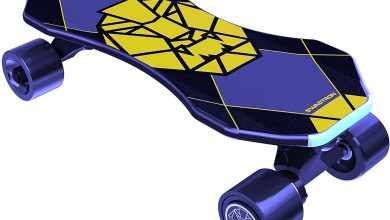Montessori at Home: Creating Your First Movement Area

Setting up a Montessori-inspired movement area at home can be a rewarding and enriching experience for both you and your child. This space not only encourages physical development but also fosters independence and self-confidence. One of the key elements in this setup is choosing the right climbing equipment that aligns with your child’s age and developmental stage. In this guide, we will explore how to select your first piece of climbing equipment, as well as provide insights into ideal placement options and space requirements for various Montessori climbing tools.
Choosing Your First Climbing Equipment
When it comes to selecting your first piece of climbing equipment, understanding your child’s age and developmental milestones is crucial. For toddlers aged 12 to 18 months, a Montessori climbing frame or a climbing triangle is an excellent choice. These structures are designed to support early gross motor skills, allowing your child to explore their physical capabilities safely. The climbing triangle, in particular, offers versatile play options, enabling children to climb, slide, and even create their own obstacle courses. For children aged 18 months to 3 years, consider investing in more advanced options like adjustable learning towers or larger climbing frames. These pieces not only promote physical activity but also encourage participation in daily tasks, such as cooking or cleaning, fostering a sense of responsibility and autonomy. As your child grows, look for equipment that can adapt to their changing needs, such as height-adjustable learning towers that can be used for various activities.
Room-by-Room Analysis for Ideal Placement
Living Room
The living room is often the heart of family interaction and can serve as a great space for movement activities. Consider placing a Montessori climbing frame in a corner where it can be easily monitored. Ensure there’s enough space around the frame for safe landings and movement. A soft rug or mat can provide additional cushioning for falls. This setup allows your child to engage in active play while being part of family activities.
Kitchen
The kitchen is another vital area where Montessori principles can shine through. Here, a learning tower can be an invaluable addition. These towers allow children to reach countertop height safely, enabling them to assist with meal preparation or simply observe cooking activities. Position the learning tower near the kitchen island or counter where you spend most of your time cooking. This not only keeps your child engaged but also encourages them to learn practical life skills.
Playroom
In the playroom, you have more flexibility with space and equipment options. This area can accommodate larger structures like climbing triangles or multi-functional playsets that include slides and climbing walls. Ensure there is ample floor space around these structures for safe play and exploration. Incorporating soft play mats will enhance safety while allowing your child to experiment with different movements.
Outdoor Space
If you have access to an outdoor area, consider extending your movement zone outside. Outdoor climbing frames or structures designed for outdoor use can provide fresh air and additional physical challenges. Ensure that any outdoor equipment is securely anchored and made from weather-resistant materials to withstand the elements.
Space Requirements for Different Equipment
When setting up your movement area, it’s essential to consider the space requirements for each type of equipment:
- Climbing Triangle: Typically requires a footprint of about 4 feet by 4 feet but should have additional clearance around it for safety.
- Learning Tower: Needs about 2 feet by 2 feet of space but should be positioned near counters or tables.
- Montessori Climbing Frame: Depending on the design, these may require more extensive space—generally around 6 feet by 6 feet—to allow for safe movement.
By thoughtfully considering these placements and requirements, you can create an engaging environment that promotes active learning through play.
Conclusion
Setting up a movement area at home using Montessori principles is an excellent way to support your child’s development while also encouraging independence and exploration. By carefully selecting appropriate climbing equipment based on age and developmental stage, along with strategic placement throughout your home, you can create a nurturing environment conducive to growth and learning. Whether it’s a simple climbing triangle or an adjustable learning tower, each piece serves as a tool for discovery and confidence-building in your child’s early years. Investing in quality Montessori toys Australia offers not only durability but also aligns with educational philosophies that prioritize hands-on learning experiences. As you embark on this journey of creating a movement area at home, remember that each piece of equipment plays a vital role in fostering your child’s growth—both physically and emotionally.




